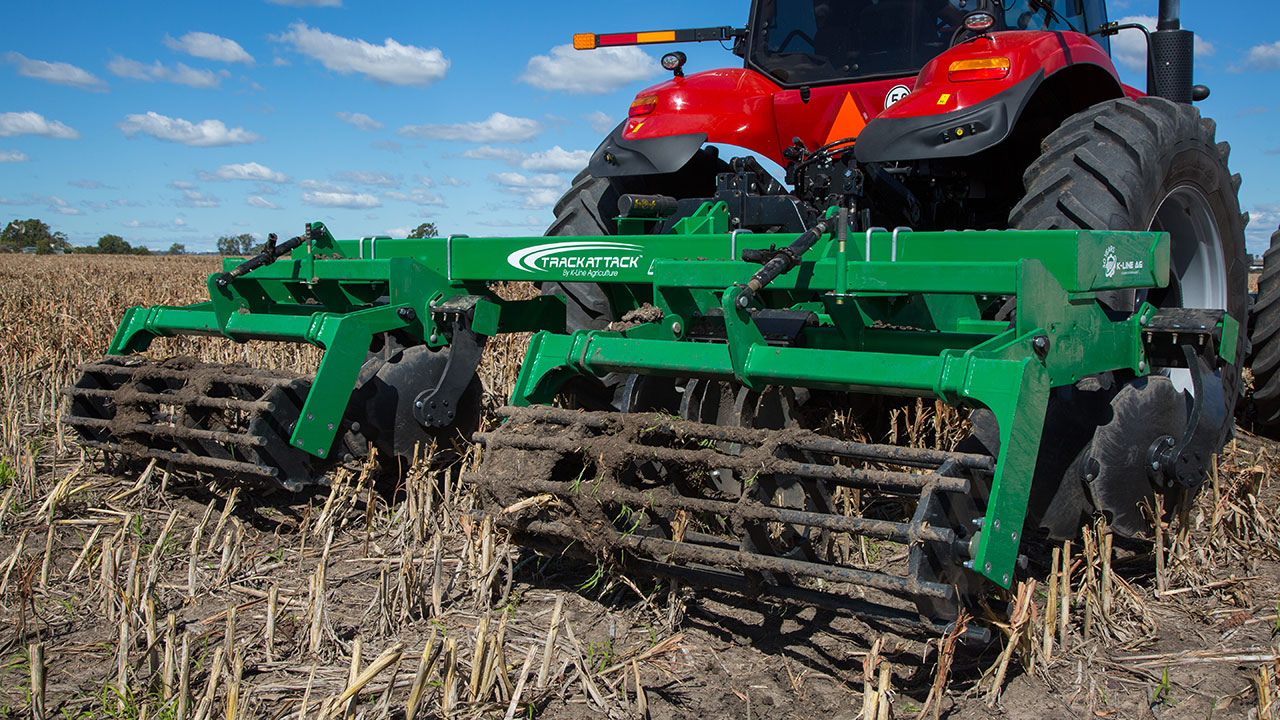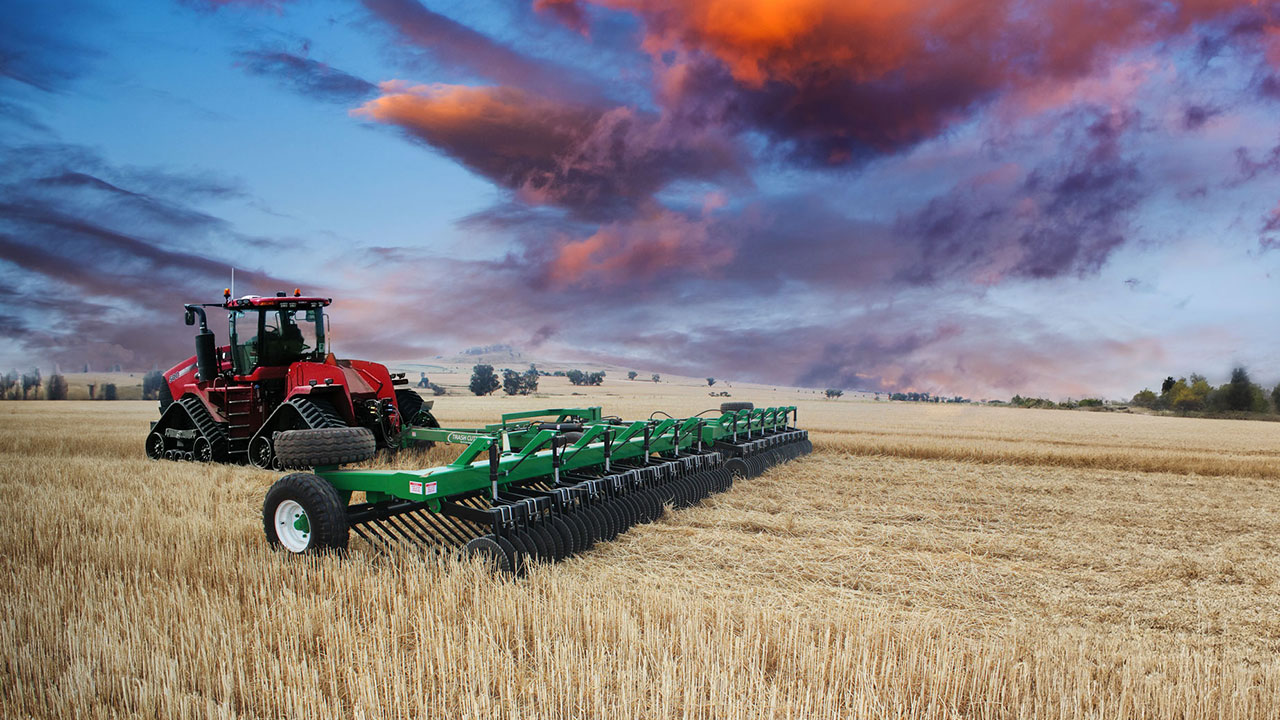Uncontrolled heavy weed growth during the summer fallow period can reduce the yield of the next crop by robbing following crops of available soil nitrogen; depleting the soil of stored moisture and reducing crop emergence due to the physical and/or chemical (allelopathic) interference at seeding time.
Controlling summer weeds early will conserve valuable soil nitrogen and moisture for use by the crop during the following season. Growers have gained an average farm crop yield increase of up to 400 kilograms per hectare with consistent summer weed control.
If left uncontrolled, weed burdens of 2.5 tonnes per hectare can cause a loss of available soil nitrogen and burdens of more than 3t/ha can reduce following wheat yields by as much as 40%.
Chemical control of summer weeds
Growers using zero-till or conservation tillage practices commonly treat emerging weeds with chemicals. Chemical control of weeds is also common in conventional tillage systems.
Summer weed control can be expensive but is necessary to prevent problems with excessive growth and/or moisture and nitrogen loss from the soil. When using post emergent herbicides:
- Water rates should be kept high (at least 60 litres per hectare).
- Add a surfactant and/or spraying oil unless otherwise directed on the label.
- Do not spray stressed plants.
- Spray grazing can be effective at high stocking rates.
- Glyphosate, 2,4-D, metsulfuron, atrazine and triclopyr are the most common herbicides used for summer weed control.
- Where summer grasses are present, glyphosate at rates around 2L/ha are generally required.
- Metsulfuron provides cheap control of wireweed, triclopyr is generally preferred for melon control and atrazine for small crumbweed (also known as mintweed or goosefoot).
- 2,4-D controls a wide range of broadleaved weeds and is preferred if stock are available for spray grazing. The ester formulations are usually more effective for summer weed control.
- Moisture stress in weeds is common in summer and reduces the effectiveness of most herbicides. This can be partially overcome by spraying early in the morning. However at this time of day, inversions may be present which could lead to excessive drift. Avoid spraying during still conditions.
Monitor for problem weeds
There are a number of weeds that are likely to present challenges over the coming summer period. The challenges lie in the fact that some of these weeds are spreading through cropping districts to a greater extent, and second, most seriously, some are showing resistance to herbicides.
The weed species likely to cause problems this summer in the major cropping districts are Feather Top Rhodes grass, melons, wire weed, and fleabane.
Let’s briefly consider each in turn.
Fleabane
Fleabane (Conyza spp.) seeds normally germinate at 20°C, so greatest germination occurs in spring and early summer. Following rain there is an initial rapid germination of seed. The seed bank can last for over three years.
Research suggests that most fleabane seeds germinate from the soil surface with very few seeds germinating from below 1cm. This suggests that the recent fleabane problems are made worse as a result of the switch from conventional to minimum tillage systems. These low disturbance tillage systems are less likely to bury seeds below 1cm depth and provide moist conditions for better emergence of seeds that germinate on the soil surface.
Fleabane may often germinate in spring and early summer prior to harvest. Once the crop is removed, the fleabane has no competition for light or moisture and can grow rapidly, especially with further summer rain. By the time there is a window for control, the fleabane are often mature, with a high tolerance to most herbicides.
Control
As is the case for most weeds, fleabane plants can most effectively be controlled with chemicals when they are emerging, mainly in early spring while they are still small. Small fleabane plants are relatively easy to kill and a late post-emergent application of some Group 1 (phenoxy) herbicides during spring can control them in cereals.
Mature fleabane can be difficult and expensive to kill, especially in mid to late summer. Strategic tillage should be considered as an option to chemicals, but if herbicides are the best choice, trials indicate that the best control of large fleabane in stubble used a ‘double-knock’ approach with a range of primary herbicides followed by paraquat 7-10 days later.
The most effective treatment was an application of glyphosate (540g/L) at 2L/ha or a mixture of glyphosate (540g/L) at 2L/ha and 2,4-D amine (625g/L) at 2L/ha with a follow up spray of paraquat at 2L/ha seven days after the initial treatment.
Feathertop Rhodes grass
Feathertop Rhodes grass (Chloris virgata), with its distinctive seed head, is steadily travelling across the country. Its prolific seed production and ability to withstand herbicides makes this weed difficult, but not impossible, to control.
The key is to concentrate on preventing seed set. Feathertop Rhodes grass seed is relatively short-lived in the soil, so with a dedicated focus it is possible to run down the seed bank reasonably quickly.
This requires an integrated and intensive management approach; there are no silver bullets for easy management.
Control
As mentioned, for successful control, seed set must be stopped or minimised to break the life cycle and reduce future weed burdens.
Large weeds (>10 cm, tillering or with seed heads) are very difficult to kill with knockdown herbicides.
Small, actively growing weeds (< 5 cm, pre-tillering) should be targeted when using post-emergence herbicides.
The double-knock tactic is very effective, particularly with a Group A herbicide followed by a Group L herbicide. The knock interval should be at least 7 days for maximum effectiveness; adding residual herbicides to the second knock may improve the Group L knockdown.
The effectiveness of pre-emergence herbicides (residuals) can be maximised by applying them when the soil surface has very little or no weed cover.
Escapees and survivors should be monitored and spot treated as soon as possible.
Strategic tillage, to bury seed or control large plants, has a role to play. Removing mature plants by cultivation can be very effective. Burial of seed below 5cm can also reduce emergence and this seed will lose viability within about 12 months (providing it is not subsequently returned to the soil surface by further tillage).
While an effective cultivation may bury the vast majority of seed, there is always a small percent of seed remaining at the soil surface in the preferred germination zone. If something is not done to prevent these seeds from germinating and establishing, then the cycle recommences.
A plan should be in place to manage these subsequent germinations via either tillage, knockdown or residual herbicides.
Competitive crops and cultivars should be planted, and narrow row spacings and high crop populations used where possible.
Commitment to two summers of 100% control of Feathertop Rhodes grass should deplete the seed bank in the soil.
Melons
Paddy melon (Cucumis myriocarpus) and Afghan melon (Citrullus lanatus) are both prostrate annual melons germinating in spring and summer. Their growth is favored by good moisture relations and bare or fallowed paddocks. Horse, sheep and cattle losses have been associated with eating the melon but the smell of the plants generally makes them unpalatable.
Control
Grazing is an effective control method after applying low rates of a hormone herbicide to make the melons more palatable.
Another example for melon control in summer might be a mixture of triclopyr, 2,4-D and metsulfuron in the early morning when plants are not stressed. Graze heavily five days after spraying. Increase rates if grazing is not possible.
Prevention of seed set by mechanical removal is feasible on small areas.
Integrated management the key
As you will note from the examples above, many weeds are showing resistance to commonly used herbicides.
To deal with this problem, an integrated management approach should be adopted. This involves having a number of tools in your spraying and cultivation arsenal that you can use as the occasion and weed species demands.
Departments of Primary industries and research and advisory agencies can provide detailed advice on just how each of the resistant weeds should be dealt with.
Common grassy weeds that are showing resistance to Glyphosate are:
- Annual ryegrass (Lolium rigidum)
- Annual veld grass (Ehrharta longiflora)
- Awnless barnyard grass (Echinochloa colona)
- Barnyard grass (Echinochloa crus-galli)
- Barley grass (Hordeum spp.)
- Brome grass (Bromus spp.)
- Crabgrass (Digitaria sanguinalis)
- Crowsfoot grass (Eleusine indica).
In most cases, an important tool in an integrated management approach is strategic tillage. Choosing an implement that enables chopping and burying of mature weed plants before seed set, and/or burying weed seed to depths that hinder germination are features that you should look for in a tillage implement.
Two implements that effectively deal with a summer weed problem and also handle carryover stubble are the Speedtiller® by K-Line Ag and its smaller brother, the K-Line Ag Flexi-Mulch®. The Speedtiller® is a high-performing, high speed dual purpose disc-tillage machine that will efficiently cut, size and incorporate high levels of mature or emerging weeds as well as crop residue. Both have the flexibility and adjustments to suit most trash burdens and soil conditions. Soil erosion from wind and water is drastically reduced by the excellent incorporation ability of these implements.
The Flexi-Mulch® is designed specifically for multipurpose use in mid-sized farming operations with 70 to 125 horsepower, 3PL tractors. Both machines are fitted with a crumbler roller that leaves the soil with an even, level tilth, ready for sowing the next crop.






























